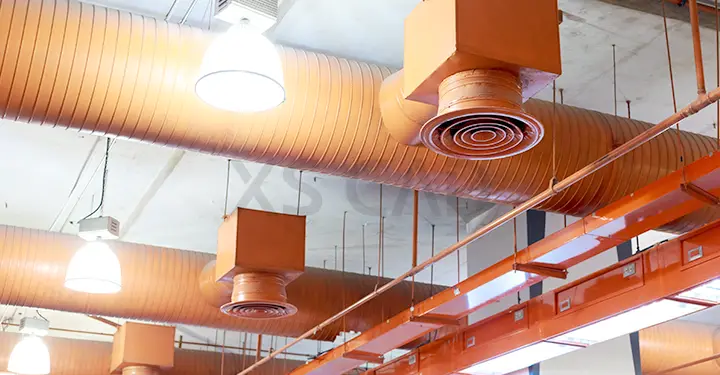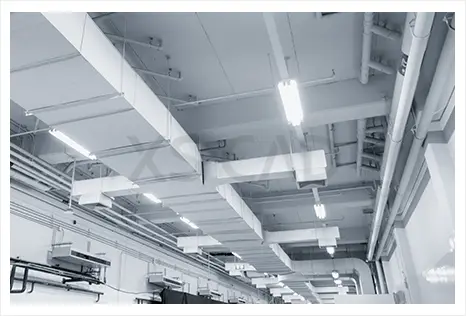Our Articles

Innovative Approaches to MEP System Integration in Large-scale Commercial Developments
English economist, physician and philosopher, William Petty, once said, ‘Money is the best rule of commerce.’ Commercial buildings do that well – make money. So, how do we make commercial buildings safe and comfortable enough to offer long-term financial savings for businesses, such as malls, hotels, restaurants and others? Implementing energy-efficient measures to large-scale commercial establishments can help businesses reduce energy costs and conserve resources. Energy efficiency can help improve occupants’ comfort, indoor air quality and a building’s resilience during power outages. Innovative approaches to MEP systems can help maximise energy efficiency, reduce energy waste and result in a win-win situation for all concerned.
In addition to performing regular maintenance on HVAC systems, fixtures and other equipment, it is increasingly relevant to consider weatherisation and insulation to improve energy efficiency. Indoor temperatures can be regulated to reduce energy consumption by adding insulation in walls, roofs and other areas. Careful consideration in duct design for HVAC systems, fire protection system design, plumbing system design and fire sprinkler system design can help safeguard occupants and building longevity.
Heating & Cooling
To reduce energy waste and save money, buildings can install programmable thermostats to automatically lower temperatures at night or when it is unoccupied. With a smart thermostat, it becomes easier to adjust settings and monitor energy consumption.

Energy-efficient Lighting
Using LEDs, fluorescent light bulbs, automated dimming systems and other energy-efficient lightbulbs results in less energy consumption and longer duration than traditional bulbs. Occupancy sensors and dimmers can also have a favourable outcome related to energy consumption on lighting, especially during the day.
Occupancy Sensors
These sensors help maximise energy efficiency in commercial buildings, as they can detect the presence and absence of occupants in a space and reduce energy use when no one is present.
Other Energy-efficient Technologies
For commercial buildings, energy-efficient technologies, such as advanced temperature control systems, can be installed to maximize energy efficiency. This would involve improved monitoring and control over building temperatures, improved comfort and consistent conditions.
Renewable Energy
When energy is collected and used from resources that can be naturally replenished, it is known as renewable energy. Solar power and other sources of renewable energy, such as hydropower, wind, biomass and geothermal energy, can help reduce a building’s energy needs from more conventional sources.
Renewable energy can be generated on site (rooftop solar, micro-wind) or off site (utility-scale renewables, community solar). Large-scale commercial developments can be a combination of renewable energy sources to meet all energy requirements.
Modular Construction
For large-scale commercial facilities, such as hotels, offices or shopping malls, modular construction can help develop a high-quality building. Using building information models (BIM) and 3D modelling during the design stages can make it easier to benefit from commercial modular construction. By automating factory processes with robotic fabrication techniques, modular construction strategies can be suitably adapted for each project’s specific requirements.
Creating building components in factories, transporting and assembling them on site solves several construction challenges, such as high material prices and wastage, disrupted supply chains and skilled labour shortages.
Industrialising key construction tasks, modular construction can standardise, streamline and automate large chunks of the value chain, so that buildings are treated almost like products. For this, modular construction companies need expert manufacturing capabilities, with sophisticated digital design platforms and efficient production infrastructure.
When building designs are repetitive and stackable in large-scale commercial complexes, including identical apartments or dormitories, modular systems can be the ideal solution for these projects, saving time and maximising profits.
Gaining traction in the MEP industry, prefabrication and modularisation spell improved quality, reduced time and increased cost-effectiveness.
To know more about MEP system . . .
Large commercial projects will thus need high-quality mechanical 3D modelling services, M&E shop drawing services, plumbing system layouts, plumbing shop design and mechanical engineering plumbing design to ensure accurate design documentation for their projects.
XS CAD has valuable experience providing M&E shop drawing services and plumbing system design for general contractors and consultants. Our range of services for global consultants include mechanical 3D modelling services, duct design for HVAC systems, fire protection system design, plumbing shop design, plumbing system layout, mechanical engineering plumbing design and fire sprinkler system design, creating BIM construction models and drawings by using Revit BIM, AutoCAD and BIM Collaborate Pro for cloud collaboration.

